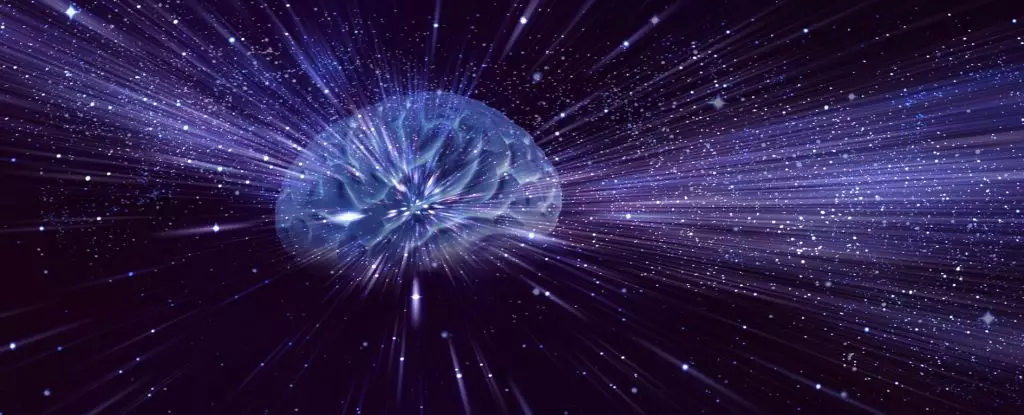Recent advancements in space biology have opened new frontiers for neuroscience, particularly through groundbreaking studies involving human brain organoids. These miniaturized, lab-grown neural tissues, technically referred to as organoids, were sent to the International Space Station (ISS) in 2019, sparking curiosity and excitement among scientists. What happened next was nothing short of astonishing: these organoids, independent clusters of human neural cells, not only survived the microgravity conditions of low-Earth orbit, but they also demonstrated accelerated maturation compared to their Earth-bound counterparts. The implications of these findings are profound, not just for astronauts but for our understanding of neurodegenerative diseases on Earth.
The pilot study was led by a team spearheaded by Dr. Davide Marotta from the International Space Station National Laboratory. Using human-induced pluripotent stem cells harvested from both healthy individuals and those suffering from conditions like multiple sclerosis and Parkinson’s disease, researchers created organoids that mimic certain brain functionalities. These organoids were specially packaged in cryovials for a month-long journey within the ISS environment. Some remained grounded for comparative analysis while others experienced the challenges of spaceflight.
The very act of sending human cells into orbit raises numerous questions about cellular behavior under extraordinary circumstances. Would they survive the absence of gravity? Would the organoids display altered biochemical activities? Preliminary results returned to Earth revealed startling survival rates alongside significant physiological differences.
A detailed post-flight analysis of the organoids unveiled exciting differences between those developed in space and those nurtured under Earth’s gravitational pull. The research found that although the space-grown organoids had a slower cell replication rate, they showcased a heightened expression of genes linked to neuronal maturation. This inverse relationship between growth and maturation metrics raises essential questions about the regulatory processes in cellular growth and development, potentially revealing new insights into how the human brain could adapt to unique environmental stresses.
For scientists, this discovery hints at a new understanding of cellular dynamics. It suggests that under microgravity, the conditions may favor maturation processes by reducing the stimulation typically provided by culture medium or traditional methods of growth—effectively enabling these organoids to live more autonomously, akin to a brain in situ.
Equally compelling were the observations concerning gene expressions associated with cellular stress. Contrary to expectations, organoids sent into the microgravity environment exhibited reduced stress responses and inflammation levels. This finding stretches our understanding of how cells respond to their surroundings. It raises an intriguing possibility: Are brain organoids more resilient in space due to the unique conditions they encounter?
Dr. Jeanne Loring from the Scripps Research Institute emphasizes the significant implication of this research: “Microgravity conditions mimic some natural processes occurring in the human brain, affecting how cells behave.” These insights could transform our conventional approaches to studying neurodegenerative diseases, as they suggest that the environmental context profoundly influences cellular responses and possibly the progression of diseases like Alzheimer’s and Parkinson’s.
Future Directions: Space as a Neurobiology Laboratory
The groundbreaking results presented by this research open doors to myriad future experiments within the confines of the ISS. The next phase will focus on deeper aspects of neuroanatomy affected by Alzheimer’s disease, directing attention to how neuronal connectivity might differ in the unique environment of space. In light of current findings, the ISS has the potential to serve as a living laboratory for studying neuroplasticity under conditions that more closely simulate the human brain than traditional laboratory settings.
With microgravity revealing its ability to provide unprecedented insight, researchers are poised to harness these conditions for illustrating complex cellular behaviors. The prospect of exploring new therapeutic avenues for neurodegenerative diseases becomes a tangible reality, allowing scientists to simulate various stressors and treatments within this unparalleled environment.
As we look toward the stars, the implications of human brain organoids thriving in low-Earth orbit extend beyond the realm of space exploration. They signal a reinvigorated approach to understanding neurological health and disease. By leveraging the unique microgravity environment of the ISS, researchers have not only opened new pathways in neurobiology but also elevated our understanding of what it means to study the human body in an extraterrestrial context. The journey of organoids into space is merely the beginning, promising transformative advancements in medical research that could benefit humanity on Earth for generations to come.


Leave a Reply